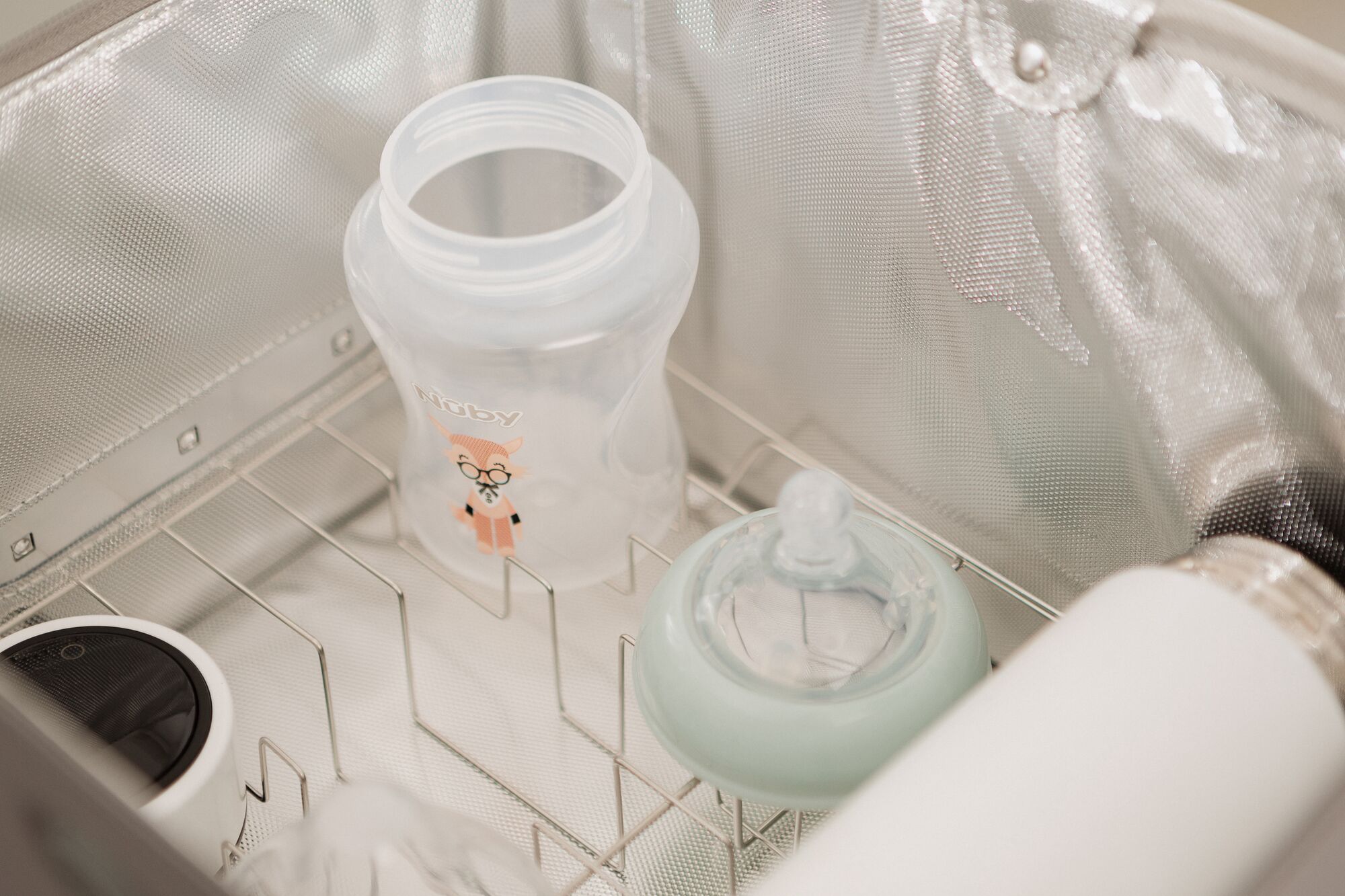Sterilising baby bottles until your baby is at least 12 months old is key to keeping infections like diarrhoea and vomiting at bay.
We all know the challenge, you’re juggling a wriggling, crying baby in one arm and trying to sterilise the bottle with the other. So, let us tell you everything you need to know about sterilising baby bottles before the chaos hits.
In this guide, we’ll tell you what to do before sterilising baby bottles and then share the four main ways to sterilise baby bottles.

What to do before sterilising baby bottles
First things first: give your bottles and teats a proper scrub after every feed. You should use a bottle brush and a teat brush to do this, only use these brushes for these pieces of equipment. Before sterilising rinse in clean, cold running water before sterilising.
How to sterilise baby bottles
There are four main methods of sterilisation: UV, steam, cold water solution and boiling water. Below, we’ll take you through the four methods.
1. UV sterilisation
UV sterilisation uses ultraviolet light to banish bacteria on your baby's bottles. This means no water, microwave or fuss. Our 3 Minute UV Steriliser sterilises baby bottles in you guessed it, three minutes… Impressive right.
- Plug the 3 Minute UV Steriliser into a power source.
- Put the metal tray inside the steriliser.
- Wash bottles and teats thoroughly, shake off excess water.
- Place the bottles and teats into the steriliser.
- Press the Nuby button once to wake the unit and again to start the three minute cycle.
- The button will flash, showing you that the sterilisation cycle is happening.
- When it is complete, the button will become a solid light.
- Your bottles are now ready to use.
3 Minute UV Baby Steriliser
2. Sterilising with boiling water
This is a traditional method that doesn’t require anything fancy just a pan and a bit of water.
- Fill a large saucepan with water and bring it to the boil.
- Add the bottles and teats, making sure they’re completely submerged.
- Boil for at least 10 minutes.
- Teats can wear out faster using this method, so keep an eye out for signs of damage like thinning or splits.
3. Steam sterilisation
Steam sterilisation can be done in the microwave or using an electric steriliser. Below are some ways of steam sterilising baby bottles:
- Using microwave sterilising bags.
- Some baby bottles are self-sterilising in the microwave, follow the manufacturer's instructions.
- Use a microwave steam steriliser or electric steam steriliser following the manufacturer's instructions.
4. Cold water sterilisation
For cold water sterilising, you’ll need a sterilising solution (usually tablets or liquid) and a container with a lid. Here's the basic process:
- Mix the cold water and sterilising solution following the instructions on the pack.
- Add your bottles and teats, making sure they’re fully under the water.
- Leave them for at least 30 minutes.
- Change the solution every 24 hours.
- There’s no need to rinse the bottles afterwards, just shake off any excess liquid before use.
How often should you sterilise baby bottles
Bottles and teats should be sterilised before the first use and then after every single feed until your baby is at least 12 months old. Even if the bottle looks clean or has just been sitting there unused, germs can still build up over time so t’s ibest to re-sterilise if it’s been more than 24 hours.
Where to store baby bottles
The NHS recommends leaving the baby bottles in the steriliser or pan until you need to use them to keep them as sterilise as possible. If you do remove them, put the teats and lid on the bottles straight away. Do this on a clean, disinfected surface. Always wash your hands before handling them or use sterile tongs instead.
Want a quick and easy option? If your baby’s hungry and time’s not on your side, our 3 Minute UV Steriliser gets the job done fast. It zaps 99.9% of bacteria in just three minutes – no steam, no water, no stress.


